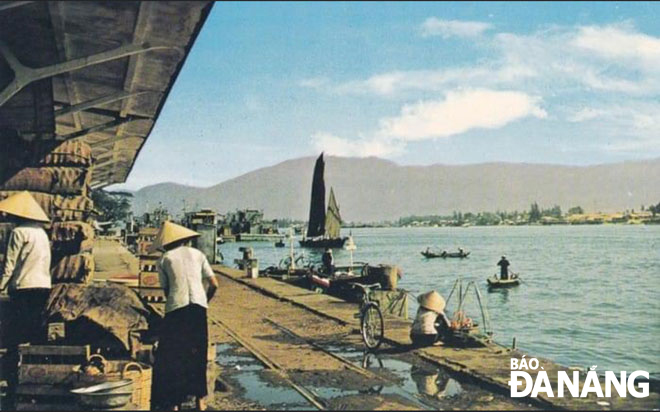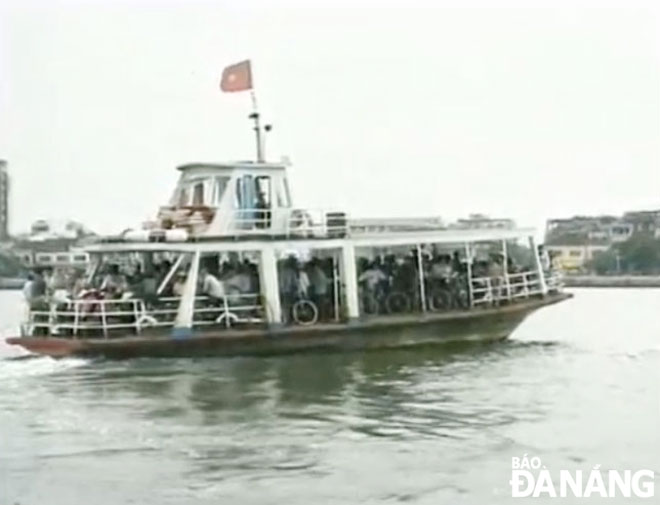Preserving Da Nang's legacy for future generations
A city is more than its buildings, roads, parks, and trains; every city has a human side, a soul too. Almost every city, has its distinct cultural identity which is hidden in its architectural works, living spaces. and other characteristics.
 |
| Memories of the Han Market Railway Station only remains in older adults. Photo: T.D.T |
Local people living on both banks of the Han River and leisure travelers certainly have many memories of ferries! However, they forgot those familiar images after many bridges were built across the river.
It is known that one of those two ferries has been converted into a cruise ship for several years. We don't know where it has gone now!
A doctor, a resident of Son Tra District, suggested that the city should find these old ferries and restore them, as well as build a small dock for these ferries. This place is expected to attract a lot of people - including many overseas Vietnamese or tourists who have memories of Da Nang in the past and will be willing to pay for taking photos. How meaningful it would be! Many of them still remember a time when the conditions of Da Nang in the past were still poor, and they were poor and struggling with life. They will love the Han River more, love the old ferries more, and love the city they used to live in.
Younger generations will probably understand more about their city in the past, and love their city more when exploring the old ferries!
As for wooden boats operating in the Thu Bon River, after modern bridges were built across Thu Bon and Truong Giang rivers, those boats that brought passengers during difficult times could be kept for a museum, and displayed next to basket boats and fishing nets instead of having to make tradditional wooden boats operating the Hoai River of the Quang region. How meaningful it is! These exhibits will considered to be vivid and meaningful education for future generations, instead of having to watch documentaries about their hometown in the past!
Let's talk about the Han River again
The land called Hien Cang in the past became the Han town, Tourane Street that was an obvious consequence when the Thu Bon Estuary of the Hoi An Port was filled up. Tourane under the management of Governor-General of Indochina Paul Doumer, had only 12 brick houses which were built by the French and located along a riverside unpaved road, now called Bach Dang Street.
Paul Doumer played an important role in building the Da Nang Port, and opening the trans-Vietnam railway. Then, the next governor-general of Indochina allowed the construction of an additional railway lines linking with Da Nang in 1905 (now called Da Nang - Hoi An railway route). It took 1 hour from Hoi An to Da Nang traveling across this route and passing through now Tien Sa and Hoi An railway stations.
 |
| 24 years ago, Da Nang people and tourists no longer saw ferries operating on the Han River. Photo: T.D.T |
Another train line was later built and passed through the Han Market Railway Station which was located on the edge of the river next to the wharf number 7, to reach Tien Sa via the De Latte bridge since 1951. This station and the Han Market helped create an old town and many warehouses around now Bach Dang, Nguyen Thai Hoc, Pham Phu Thu, and Tran Phu streets. This old town was home to Chinese merchants, and major iron and steel, agricultural and transportation brands such as Ninh Thai, Ly The Hoanh, Du Thai, Truong Cong Huynh De and even Viet Quang bookstore, and Kim gold store that were once famous for their French-styled houses in the early 20th century.
Thus, the Han River Port and that train line contributed to creating the Han Market and Tourane’s most prosperous commercial area that existed until 1915. The commercial area and the Han Market Railway Station still existed until the end of 2000. The old railway station was then demolished when Bach Dang Street was expanded.
Urbanization process has given Da Nang a new look, but the city’s ancient landscapes and its architecture that contributed to creating the city’s first urban area along the Han River no longer exist. Da Nang has accidentally lost its physical objects that existed 100 years ago.
According to architect Hoang Su, in 1996 he raised a sigificant issue about the preservation of the French architectural works on Bach Dang and Tran Phu streets, with a focus on urban expansion and modernization on the Eastern bank of the Han River. A city is more than its buildings, roads, parks, and trains; every city has a human side, a soul too.
Therefore, it is necessary for the city to preserve its legacy for future generations.
Reporting by TRUONG DIEN THANG – Translating by H.L